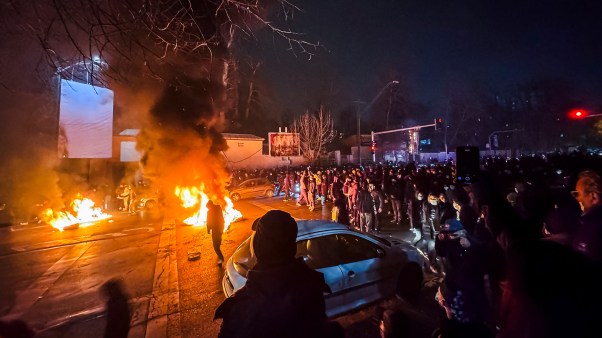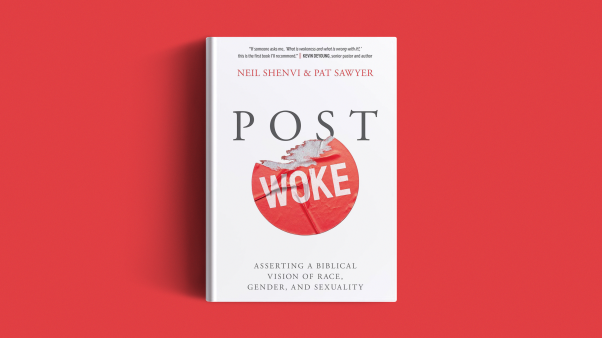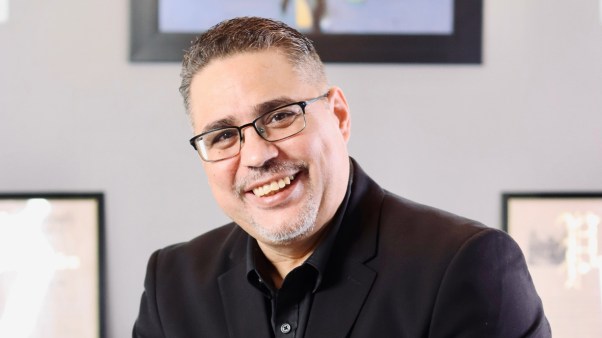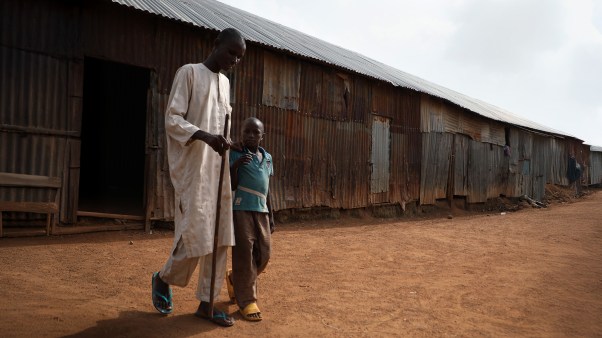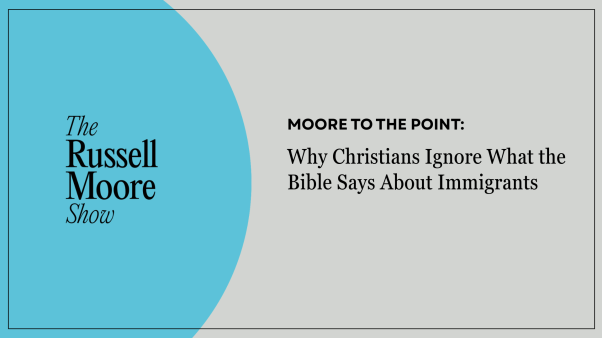Back in March, Iowa pastor Andrew Schmidt could tell from the energy in the sanctuary that it would be Celebrate Church’s most-attended weekend since the pandemic began.
Schmidt welcomed new members, baptized babies, and teared up as he extended his arms to pray blessings over the congregation from the stage. Even with the church split between mask-required and mask-optional services, he said seeing 390 people in the building felt “almost normal.”
It was exciting—and a wake-up call.
“Wait a minute, we didn’t want to just go back to the same things,” he later told fellow leaders at Celebrate, the biggest church in the 7,000-person city of Knoxville. “What is different for us, opportunity-wise?”
With COVID-19 vaccines making way for looser recommendations around distancing and masking, many congregations in the US have been able to get back to normal operations again. But some are not rushing to return to how things were, opting instead to rethink how and why they gather.
Across the country, pastors like Schmidt have ushered weary congregants through virtual worship setups, lonely hospital stays, funerals, job losses, intense political tensions, and relentless debates over pandemic precautions. Churchgoers making their way back through the sanctuary doors in 2021 will carry the weight of trauma and divides built up over more than a year spent apart—if they decide to return to the building at all.
During the first months of the year, fewer than half of regular churchgoers in the US made it to an in-person service, according to the Pew Research Center, though more than three-quarters said their churches had reopened.
Attendance has continued to rise, but some who once filled the rows of gray upholstered chairs in Celebrate Church’s auditorium, and sanctuaries across the country, have gotten used to the convenience of online worship—or have checked out altogether.
“We have to retrain people from the beginning on why you should bother to assemble,” said Collin Hansen, an elder at Redeemer Community Church in Birmingham and coauthor of the upcoming book Rediscover Church: Why the Body of Christ Is Essential. “I think pastors take that for granted and are going to be surprised how many people never had that vision to begin with and never come back when the all-clear is given.”
The immediate challenge is to get people to see the church as a community requiring their involvement rather than as content to consume on their own—a problem that was widespread even before COVID-19 struck.
“The sense of deep-rooted connectedness that most Americans have to a local church is becoming more and more transactional, less and less frequent,” said David Kinnaman, president of the Barna Group.
The past year and a half, he said, didn’t just change how Christians met; it changed their hearts and minds toward the church. Barna found that a third of practicing Christians had dropped out of church at some point and 29 percent of senior pastors said they “seriously considered” quitting in the past year.
“Church leaders are going to revert to doing things the ways they’ve always known them, whereas the population in general and millennials are going to find that this disruption altered their habits and perspectives on the role and relevance of the church,” he said. “The gap between the church and society is only going to be larger as we rebuild the church in a postpandemic world.”
During nearly every crisis in US history, through wars and disasters, at least church communities could be together. In 2020, Christians faced the threat of the coronavirus, as well as the country’s compounding political and racial tensions, away from the people and spiritual practices they typically relied on.
“Pastors will have to be transparent about their personal experience in the pandemic,” said Daniel Yang, who coaches church planters across the country as the director of the Send Institute, a think tank for evangelism affiliated with the Southern Baptist Convention and Wheaton College. “Modeling that in the congregation gives permission to the congregation and opens them up to doing the same in small groups or one-on-one situations,” he said.
Yang rattles off the kinds of issues that have come up in his community in suburban Chicago: strained marriages, mental health struggles, young adults worried over school and career decisions, racial trauma.
What feels like struggles atop struggles could be an opportunity for the church to live up to its ideals, to care well for each other and look to God in their suffering.
“For us to shy away from these things would be to reject what the Lord has offered,” Yang said.
Ahead of its return to in-person services last month, One Life City Church in Fullerton, California, convened a series of lament panels to bring deeper emotions to the surface. Medical staff cried as they recounted stories from the hardest days treating COVID-19 patients in the ICU, and Asian Americans spoke up about the vulnerability they felt amid the recent surge in hate crimes.
The discussions were meant to bypass the slow awkwardness of surface-level catch-ups and get people talking about how they’re actually doing and what they went through over the past year.
“If you come to church, it almost feels like that’s the place where you hide and pretend everything’s okay. There’s a sad irony to it because our faith is built upon a trauma: Christ died on the cross,” said David Wang, One Life City’s pastor of spiritual formation. Wang is also a clinical psychologist and professor at Biola University. “If anything, our faith has so much to say to people who have survived things, which is most of us. COVID is a mass trauma on a global scale.”
Throughout the pandemic, churches still adapted to extend care in the short term, boosted by an influx of volunteers and donations from people desperate to help. But so much outreach was done from a literal arm’s length, without the ongoing conversation, prayer, and physical togetherness that grounds Christian community.
At Celebrate Church in Iowa, members rose to the challenges of the pandemic, running a drive-thru food bank that expanded from serving 27 families to 170 families a week. Church leaders started the pandemic by calling every member to check in and following up months later.
Larissa Van Donselaar, a member and elder at the Reformed Church in America congregation, happened to cold-call a woman she had never met just after the woman had lost her job, and they prayed together over the phone.
The pandemic forced churches to prioritize people over programs, and Van Donselaar believes that’s where their focus needs to remain. “God doesn’t call us to go back,” she said. “We only go forward and look forward.”
At Celebrate Church, “people are hungry now to be in person with each other and to have real relationships,” said Schmidt, so the church is trying to offer more points of connection. Members who have never done Bible study are now signing up, and leaders are exploring ideas for “micro communities” to open up new settings for prayer, worship, and teaching on a smaller scale.
The “micro gathering” trend, where Christians from the same church worship in homes and backyards, took off during the pandemic, especially in places where restrictions on worship extended for much of 2020. It’s expected to carry on even now that it’s safe to return to full services.
“There are a significant number of pastors asking the question, ‘How do we do church in a more decentralized fashion coming out of the pandemic?’ ” said Yang. “There’s going to be a partial reimagination of how to be the body [of Christ].”
Without big church gatherings during lockdown, Christians didn’t have the chance to sit side by side in pews or come to the Communion table alongside fellow churchgoers with whom they disagree. Instead, debates over major issues like the 2020 election and pandemic responses played out over social media, and it became easier for people to segregate with those who shared their beliefs or even to switch churches.
Experts say many pastors will find themselves reopening to deeper divisions or having lost members who opted to find more like-minded congregations. “You’re going to have to ask, ‘Okay, now that everybody’s vaccinated, where are we? Are we united? Are we on the same page?’ ” said Yang. “That conversation is going to happen for certain kinds of churches.”
Hansen mentioned a retreat center pitching itself as a place for churches to get away and hash everything out when they’re back together. “This isn’t going to be solved through some one-way sermons,” he said. “We need to talk about why this is going to be so difficult for us.”
The conversations won’t be easy, especially if churches are quick to celebrate a “happy ending” rather than address challenges. There’s no trajectory for how a community recovers from a trauma they experienced at once but separately. “If we were to try to skip all the stages of grief and go straight to meaning-making and celebration, we’d just be encouraging avoidance and denial,” said Wang at Biola. “We’d be setting people up for failure in a way that I don’t believe is sound theology either.”
Predominantly Black churches, whose communities suffered a disproportionate number of COVID-19 deaths and were hit hardest financially during the pandemic, have a slower trajectory.
“We’re going to have to be ready when people come back together for those who it’ll feel like a dam breaks when they walk into the doors. It’ll feel like they’ve been holding in all this longing to be together, to worship,” said Nicole Massie Martin, executive director of trauma healing at the American Bible Society and a minister at Kingdom Fellowship AME Church in Maryland.
“When they get a chance to do that, I hope and pray the church will be prepared to bring healing and usher people into a new season.”
Kate Shellnutt is senior news editor of Christianity Today. Follow her on Twitter @KateShellnutt.





